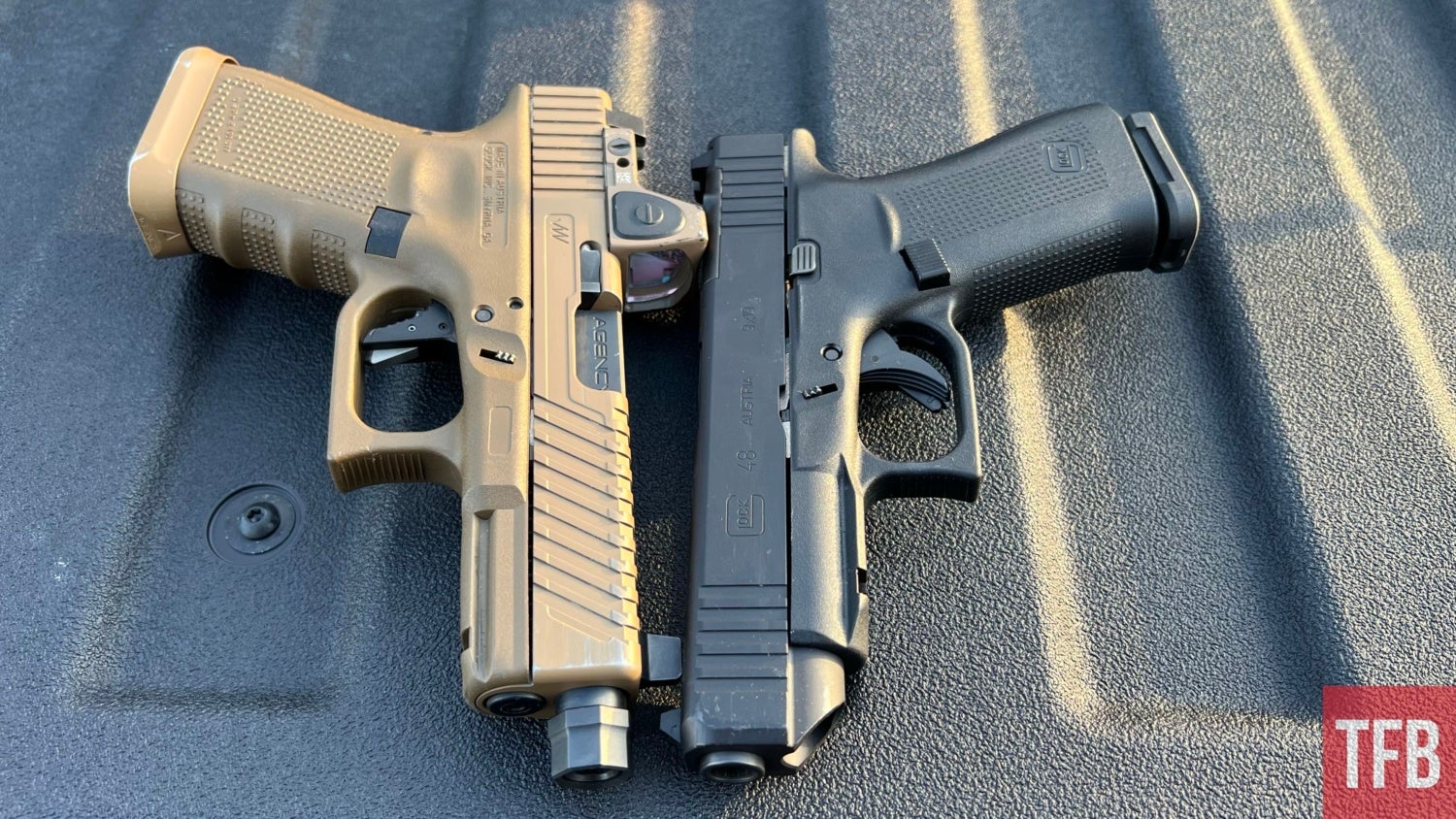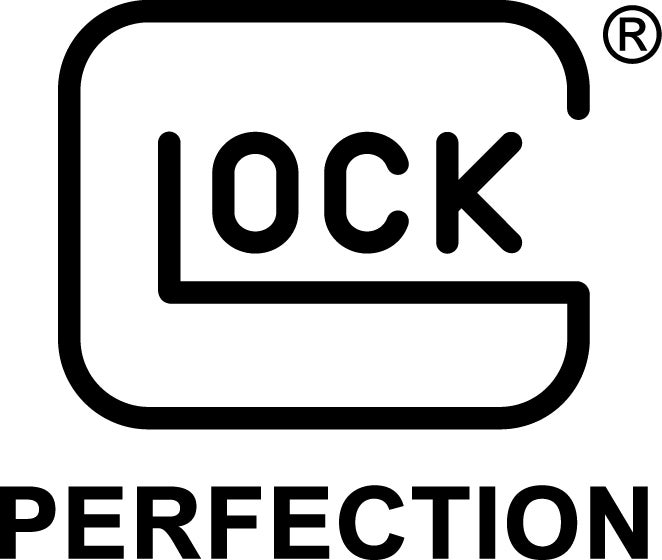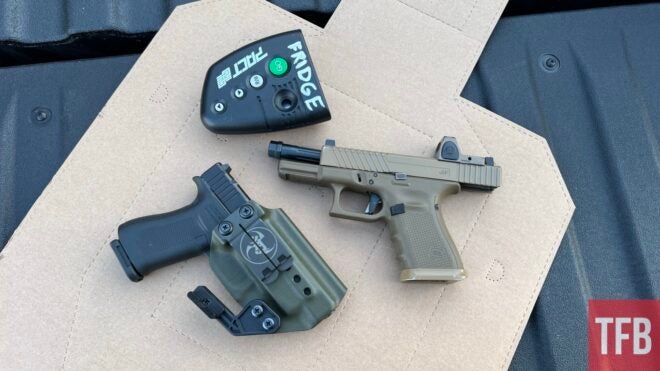Welcome back to another edition of Concealed Carry Corner. Last week, we talked about cover garments and how they can help carry in various situations. If you happened to miss that article, be sure to click the link here. This week, I wanted to talk about a topic that can improve your shooting skills drastically without firing a large amount of ammunition. Dry firing is one of the most effective and affordable ways to practice skills without firing any live rounds. Let’s take a closer look at excelling at dry firing.
Concealed Carry Corner @ TFB:
- Concealed Carry Corner: Normal Problems For Carrying Concealed
- Concealed Carry Corner: Carrying A Concealed Gun With Layers
- Concealed Carry Corner: Iron Sights For Carry Guns
- Concealed Carry Corner: How To Conceal In An ORV

The Benefits of Dry Firing
There’s no question dry firing has its benefits. If I had to give just one piece of advice to new shooters, it would be to dry fire at least 3 times a week. When getting into defensive shooting for carrying a concealed handgun or shooting for self-defense, being able to train at home can help develop a number of contributing skills while allowing the shooter to save time and ammo by not going to the range. For most people, it is simply not possible to take 2-4 days a month to head out to the range to work on skills.

Whether it is the financial aspect or simply being unable to set enough time aside, it’s difficult for the average person to make live fire practice a regular part of their life. Taking just 20 minutes one day a week can drastically improve everything from your trigger pull, trigger reset, sight picture, magazine changes, and draw stroke all without firing a single shot. You can practice almost every single fundamental skill with dry firing besides recoil mitigation and improve your speed from the comfort of your home. Practicing at home and working on your trigger pull and everything else can not only make you more proficient with the fundamentals but can also make you faster. Dry firing does have potential negative implications though so let’s see some of the potential problems.

Potential Problems With Dry Firing
Dry firing can be an incredible training tool for new shooters but can be equally harmful if done incorrectly. Recently I have been helping a few coworkers learn how to shoot, and part of that learning curve is dry firing at home to reinforce skills without having to hit the range every single week. One of my coworkers went home and said he dry-fired for hours at home on his own. Two days later, I took him out to the range, and the entire 4-hour range session was focused on fixing all of the bad habits he had developed. Every single aspect of his shooting fundamentals was impacted.

Simple things like grip went right out the window to the point where he was gripping his pistol with his support hand thumb wrapped around the back of the pistol so if he fired the gun it would immediately slam into his thumb. That was the first obvious problem that presented itself when we went to the range. Every other fundamental needed to be fixed from his trigger pull and flinching, sight picture and keeping the sights level and even his reloads became worse. In this case, the hours he spent dry firing actually hindered his process rather than helping which is a real possibility with new shooters. Having a good understanding of the basic fundamentals is the absolute most important factor when learning how to shoot a handgun for concealed carry.

Best Practices With Dry Fire
With enough repetition, whatever you practice will become what is cemented as muscle memory. If you practice everything correctly, dry firing can make drastic improvements in a short period, but if done incorrectly, it can be extremely damaging to your fundamentals. In the past, I have always promoted dry fire but the most important aspect I never mentioned before is having enough background knowledge in shooting fundamentals that you can correctly dry fire if you have to.

Having a solid understanding of firearms safety and the basic fundamentals are the two most important aspects of dry firing at home. Obviously, the firearms need to be completely unloaded with all ammunition put away separately from the area you are working on drawing from concealment and training. The second is knowing exactly how to manipulate the trigger, line up sights on a target, and draw from concealment as well as practicing reloads if you happen to carry a spare magazine. I always tell people if they’re not sure if they are doing something right, there are countless YouTube videos online about the proper fundamentals of each aspect of shooting whether it’s trigger manipulation or sight picture.

Overall Thoughts
At this point, you probably think I sound like a broken record talking about dry firing but it really is one of the most significant tools someone can use to progress their shooting without spending a ton of money. Dry firing is one of the most effective ways to exercise your muscle memory and develop positive skills but if done incorrectly, can cause more harm than good to your overall progress.
What are some of the things you guys do when it comes to dry firing as well as how often you like to practice? Let me know in the comments below. If you have questions about dry firing or firearms in general, feel free to shoot me a message on Instagram @fridgeoperator. Stay safe out there and we will see you next week in another edition of Concealed Carry Corner.
TFB’s Concealed Carry Corner is brought to you by GLOCK

 Your Privacy Choices
Your Privacy Choices